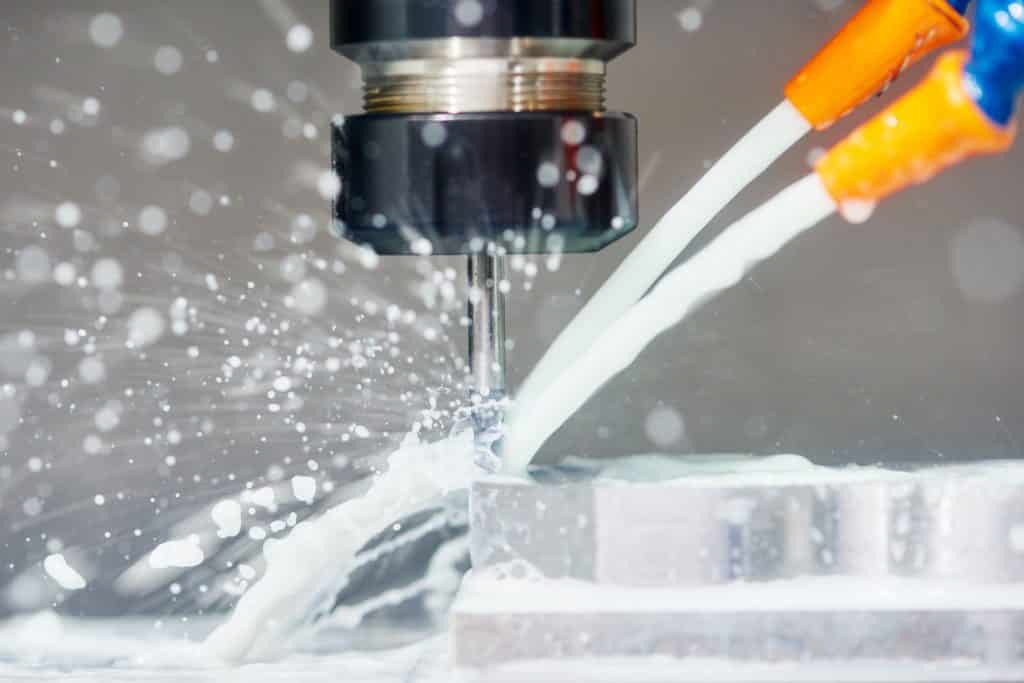In any given workshop on any given working day, you may well see well trained workers operating well maintained machines, diligently crafting excellent products from quality materials, all in a seemingly safe and secure working environment.
Why on earth might they (or you) spare more than a passing thought for something as simple as coolant?
The fact is; the right coolant mixture goes a long way towards ensuring all those positive things above happen. And it achieves that by performing three vital functions:
- Lubrication and reduction of friction, extending the working life of your tools and improving surface finishes
- Cooling components and heat dissipation in the working/cutting zone, preventing damage and increasing accuracy
- The flushing and removal of debris from the cutting area
So, bearing in mind that the right coolant can offer a safer, higher quality and more accurate standard of work and end product, how do we go about making the right choice for the myriad of different jobs we come across, and what are the different types of coolant available?
Neat fluids
As their name suggests, neat fluids are not diluted or mixed with water. They are typically used when working with high alloy steels and offer much greater cooling efficiency compared to soluble or aqueous coolant mixtures (more about those below). If your machining operations involve tapping or threading high alloy materials, a neat fluid will offer improved machining, improved surface finish and reduced tool wear.
Aqueous fluids
Unlike their neat counterparts, aqueous fluids require a little more attention to detail to remain effective, and a strong ongoing partnership with your coolant supplier is important for help or advice. It is also important to closely regulate the concentration levels of your mixture to ensure maximum efficiency is attained, and to avoid issues such as skin irritation, filtration problems or poor surface finish and fungal or bacterial build up.
Aqueous fluids generally fall into three categories, and it is here that the knowledge and advice of your supplier can pay off, as the performance characteristics of each mean they are better suited to certain tasks, not to mention compatibility issues with the lubricants already present in your machines.
Conventional/ milky
Has the highest oil content and has a milky white appearance when diluted accurately.
Semi-synthetic
A moderately low oil content which, when mixed correctly with water forms a translucent mixture, through which work can more easily be seen.
Synthetic
An oil free coolant generally used in grinding.
It is also important to remember that, even if your choice has been made then an ongoing and regular system of monitoring the condition of your coolants are in place, a system that must record these parameters daily and weekly, enabling you to immediately rectify any issues:
- The concentration of the fluid (formally and regularly checked and recorded)
- The pH value of the fluid
- The Bacterial and fungal condition of the fluid
- Are any dissolved salts present and the hardness of the water used in the mixing process
Choosing the right coolant mixture needn’t be a complicated process, but it is important to get it right, to maintain your high standards, and reduce waste and costs, while also maintaining a safe working environment.
Published 20th February 2018


